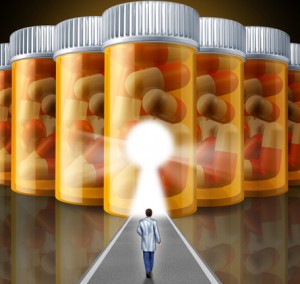
Self-harm refers to an intentional act of self-poisoning or self-injury, irrespective of the motivation or apparent purpose of the act (NICE, 2004). It is now widely accepted that people who self-harm are expressing their emotional turmoil by committing the act.
Self-injury usually involves cutting, but can also include burning, hanging, stabbing, shooting, swallowing or inserting objects, and jumping in a way that can cause injury.
Common methods of self-poisoning include abusing prescribed or over-the-counter medications, or less commonly illicit drugs, other household substances or plant material.
There are two NICE guidelines concerned with the management of self-harm (NICE, 2004; NICE 2011), both of which were mostly developed from the expert opinion of the guideline development group, following narrative reviews of the evidence, where such were available.
The evidence is pretty thin on the ground in this field, so it’s good to see an updated systematic review from the Cochrane Depression, Anxiety and Neurosis Group, which was published on Monday of this week. This is a refresh of a review last updated in 1999, which covered pharmacological and psychosocial treatments for deliberate self-harm. The reviewers have split the pharmacological and psychosocial interventions this time around and will publish a separate review on the psychosocial treatments soon.
The main objective of this new review was to find all randomised controlled trials (RCTs) of drugs or dietary supplements for self-harm in adults, and to conduct a meta-analyses that compared the effects of specific treatments with comparison types of treatment (e.g. placebo/alternative drug treatments).

The review aimed at finding all randomised controlled trials of drugs or dietary supplements for self-harm in adults, and to conduct a meta-analyses of the effects
Comorbidity with other mental health conditions
There is a high prevalence of other mental health conditions (such as depression, anxiety disorders and borderline personality disorder) in people who engage in self-harm.
So, it’s reasonable to consider what impact some existing treatments (like the ones listed below) may have on the recurrence of self-harm:
- antidepressants(used in the same dose range as they are for depression) are often considered, and SSRIs are preferred for their lower case fatality indices (Hawton et al, 2010);
- low dose antipsychotics may be used to reduce heightened arousal, which is one risk factor for self-harm may be (Battaglia 1999);
- mood stabilisers have specific benefits for patients with bipolar disorder or unipolar depression, and might be anticipated to reduce suicidal behaviour;
- natural products (especially dietary supplementation of omega-3 fatty acids) might also be anticipated to have a reducing effect on suicidal behaviour.
Methods
The reviewers carried out a very comprehensive and systematic search and (after imposing their stringent selection criteria) ended up with 7 trials including a total of 546 patients. The trials were independently selected and appraised for quality using the GRADE approach.
A meta-analysis was only possible for one of the treatments covered by the review: newer antidepressants (Nomifensine, Mianserin and Paroxetine) on repetition of self-harm at the last follow-up. This analysis pooled the trial data from 3 studies (243 patients in total) and used a random-effects model.

The quantity and quality of trials in this area needs to improve
Results
The authors found no significant treatment effect on repetition of self-harm for:
- newer generation antidepressants (Odds ratio (OR) 0.76, 95% Confidence interval (CI) 0.42 to 1.36)
- low-dose fluphenazine (OR 1.51, 95% CI 0.50 to 4.58)
- mood stabilisers (OR 0.99, 95% CI 0.33 to 2.95)
- natural products (OR 1.33, 95% CI 0.38 to 4.62)
A significant reduction in self-harm repetition was found in a single trial of the antipsychotic flupenthixol (OR 0.09, 95% CI 0.02 to 0.50).
The quality of all the trials included in the review, according to the GRADE criteria, was low to very low.
Conclusions
The authors concluded:
Given the low or very low quality of the available evidence, and the small number of trials identified, it is not possible to make firm conclusions regarding pharmacological interventions in SH patients. More and larger trials of pharmacotherapy are required.

This review found no clear evidence for medication or dietary supplements to reduce the repetition of self-harm
Summary
This well conducted systematic review shows that there is little evidence to support the use of either pharmacological or natural products for the treatment of self-harm. However, as the authors note, very few trials that have been conducted, and those that have are small and low quality, which means that possible beneficial effects of some therapies cannot be ruled out. Furthermore, in view of an indicated positive benefit for flupenthixol in an early small trial of low quality, future studies might include evaluation of newer atypical antipsychotics. Other research could include evaluation of combined pharmacotherapy and psychological treatment.
It’s worth noting that a separate Cochrane review on psychosocial interventions is also planned, so we can only hope that clearer evidence is produced by that piece of work, to support this group of patients.
Links
Primary paper
Hawton K, Witt KG, Taylor Salisbury TL, Arensman E, Gunnell D, Hazell P, Townsend E, van Heeringen K. Pharmacological interventions for self-harm in adults. Cochrane Database of Systematic Reviews 2015, Issue 7. Art. No.: CD011777. DOI: 10.1002/14651858.CD011777.
Other references
Battaglia J, Wolff TK, Wagner-Johnson DS, Rush AJ, Carmody TJ, Basco MR. Structured diagnostic assessment and depot fluphenazine treatment of multiple suicide attempters in the emergency department. International Clinical Psychopharmacology 1999;14:361–72. [Abstract]
Hawton K, Bergen H, Simkin H, Cooper K, Waters K, Gunnell D, et al. (2010) Toxicity of antidepressants: Rates of suicide relative to prescribing and non-fatal overdose. British Journal of Psychiatry 2010;196:354-8.
National Collaborating Centre for Mental Health (2004) Self-harm. The short-term physical and psychological management and secondary prevention of self-harm in primary and secondary care (full NICE guideline). Clinical guideline 16. The British Psychological Society and the Royal College of Psychiatrists. [Free Full-text]
National Collaborating Centre for Mental Health (2011) Self harm. The NICE guideline on longer-term management (full NICE guideline). Clinical guideline 133. National Institute for Health and Care Excellence. [Free Full-text]

@Mental_Elf interesting lithium is used for bipolar for SH I often wonder why one DX gets meds another doesn’t ? I think therapy is better
@BPDFFS @Mental_Elf not surprising lithium is a mood stabilizer with anti-suicide properties–but self harm not always connected to suicide.
@jenl54361 @Mental_Elf http://t.co/kSp9BMRGka there are several like this
Medication for self-harm: new Cochrane review finds very limited evidence to… http://t.co/HTrZj4H8mJ #MentalHealth http://t.co/9TPs76apuJ
“Medication for self-harm: new Cochrane review finds very limited evidence to support its use” http://t.co/tyaFi50QuI
RT @Mental_Elf: Today @DochkaH considers a recent @cochranecollab review of pharmacological interventions for #selfharm in adults http://t.…
Los psicofármacos no son eficaces en el tratamiento de las conductas de autolesión
https://t.co/xsD82Hgucn vía @Mental_Elf
Una revisión Cochrane encuentra muy poco apoyo al uso de medicación para reducir la recurrencia de auto-lesiones http://t.co/PIKF5tqCt6
Medication for self-harm – are some treatments better than others? #depression #anxiety #mentalhealth http://t.co/AGqhQuGyvy @Mental_Elf
Medication for self-harm not effective, finds Cochrane review. via The Mental Elf http://t.co/qiHTO3BULo
RT @AllenFrancesMD: No evidence psychiatric medication reduces self harm
http://t.co/RQsrw4mbhI
@Mental_Elf
Let’s hope psychosocial Rx does
Siste nytt om selvskading her: http://t.co/3EIJyNlU77 Dessverre ikke godt nytt.
Håper på bedre resultater av terapidelen av oppdateringen.
RT @Mental_Elf: Don’t miss: Medication for self-harm: new Cochrane review finds very limited evidence to support its use http://t.co/NBEpWa…
RT @DochkaH: My blog today on @cochranecollab review of pharmacological interventions for #selfharm in adults http://t.co/umYZBLXZQn
http://t.co/mToOjS5Mn0
I argue that it already exist a drug with proven effect against self-injury and it’s Clozapine, because it lowers suicides in schizophrenia. In a novel by Berny Påhlsson about her life she stopped self-injury, when she got Clozapine. Possibly, other antipsychotics have effect against self-harm if given in high doses. A Swedish study recently showed that high doses of antipsychotics reduce suicide risk.
To discontinue antipsychotic medication I think may be a form of self-injury. since the psychosis can give harmful losses in function. Interestingly, Clozapine has the effect that fewer with schizophrenia interrupts this medication compared to other antipsychotics. Also Zyprexa has less medication interruption than other antipsychotics demonstrated in the CATIE-study.
RT @AllenFrancesMD No evidence psychiatric medication reduces self harm
http://t.co/yHmjLyubZT
Medication for self-harm: new Cochrane review finds very limited evidence to support its use https://t.co/b45Ks3Bpq5 via @Mental_Elf
Many thanks. We think your blog is a very accurate summary of our review and the current evidence on pharmacological treatments for self-harm patients. The number of studies was limited and the evidence is relatively weak. It therefore remains uncertain what the potential might be for such treatments in this important patient population. There is likely to be potential for antidepressants in the treatment of older self-harm patients with moderate or severe depression, given current evidence that antidepressants may reduce suicidality in such patients. However, trials of medication in older self-harm patients are lacking. Also, given the increasing evidence for anti-suicidal effects of lithium there may be potential for effectiveness of such treatments in some self-harm patients. However, the only trial of lithium in our review produced a non-significant result (although no suicides occurred in patients in the lithium treatment arm compared with three in the placebo treated group).
We believe that the greatest potential for effective treatments in self-harm patients lies with psychosocial therapies, although combination therapy might prove beneficial.
Kind regards,
Keith Hawton
Medication for #selfharm: new Cochrane review finds very limited #evidence to support its use http://t.co/8u2BW02tlH